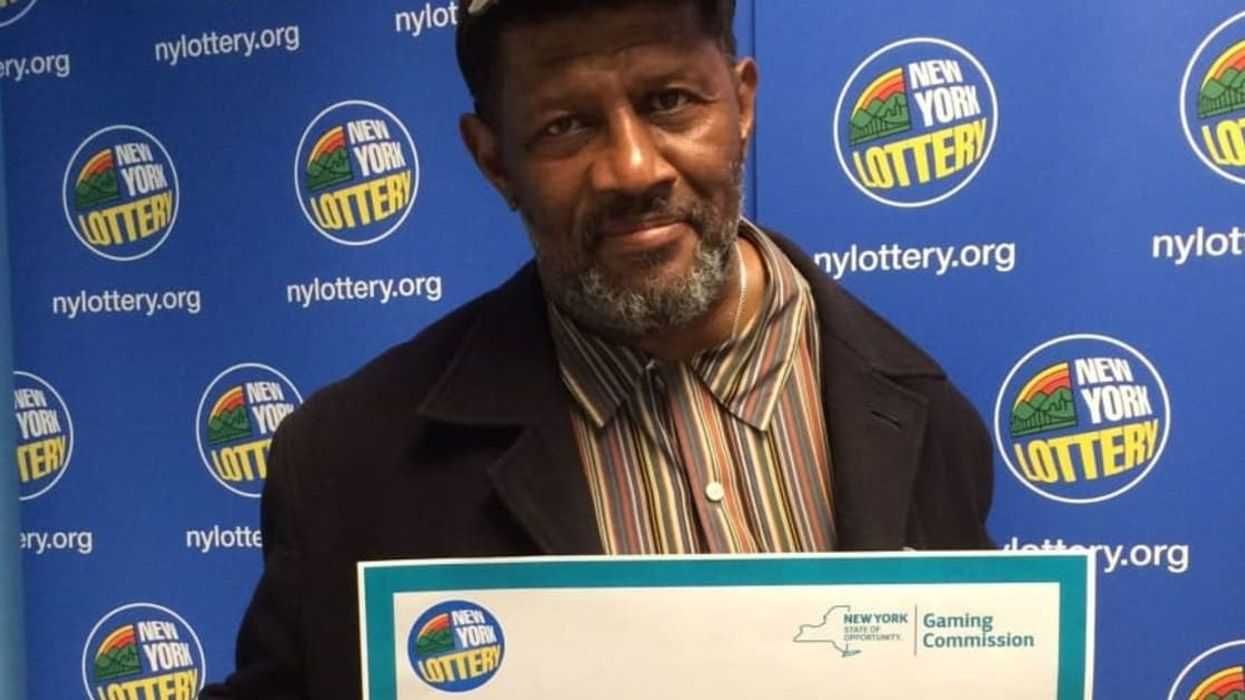In the digital age, it’s never been easier for like-minded, talented individuals to find each other—or for companies with cash to burn to recruit them. There’s a romance to technology as it culls, compiles, and practically backlogs people you virtually know, want to know, or might as well know even if it’s only by reputation.
I’ve had the good fortune to work on several web projects, most of them rabid attempts to bridge the gap between high-minded criticism and good old-fashioned sports appreciation, that grew out of this petri dish of talent. The hierarchy of professionals and amateurs was long ago reduced to rubbish by the digital revolution; needing little encouragement, people found themselves as writers—and found audiences for their work.
But the prime defect of this abundance of talent has, without question, been organization. Maybe it’s the casual nature of it all. Maybe it’s the lack of practice. Or, who knows, maybe there’s just too much happening, much too fast, for things to settle into a structure. Whatever the case, it feels like these noble, promising creative ventures tend to fall into the same patterns: Nobody’s in charge, everybody has a voice, and nobody feels comfortable restoring order. We’re all too busy…being good at stuff.
What I’m referring to doesn’t involve rampant egoism in the traditional sense, more too many people who simply don’t know any better than to run wild as the creative “I.” Regardless, the net effect is the same: Nobody has a responsibility to the larger organism.
It would really have helped things if there were some easy strategy for building community out of short-term, fragmentary relationships, if there had been a pragmatist’s approach to getting along that acknowledged that drive we all have to do it on our own (or pretend the rest of the world doesn’t exist).
I really should’ve known better. Exactly that strategy was close at hand for me, since I spent so much of the last decade or so writing about basketball for various web formations. Between 1991 and 2011, 11 of the 20 NBA titles were racked up by Phil Jackson, head coach of the Chicago Bulls and then the Los Angeles Lakers. Jackson is known for three things: expertly managing superstar personalities, passing out esoteric reading assignments to professional athletes, and running the triangle offense, a system devised by longtime assistant coach Frederick “Tex” Winter. The triangle is first and foremost a blueprint for effective basketball. However, it could also do a lot to help us understand how organization can take root when hierarchy has fallen and the surrounding ground has gone mushy as it has in the less hierarchical workplace of today.
Jackson’s 11 titles are a league record. He coached Michael Jordan, Scottie Pippen, Shaquille O’Neal, and Kobe Bryant. He’s also something of an eccentric, prescribing to his players Buddhist meditation and Great Books, matching texts to individuals based on their distinct personalities. Jackson’s detractors will tell you that anyone can win with Jordan or Bryant; backhanded praise would label him a mystic, or a master manipulator. But these interpretations leave out the triangle itself, which is equal parts system, idea, and open-ended fiat. The triangle understands how to spin community out of parties who, on some level, are inherently opposed to the idea—and should be. In basketball terms, it’s how you make model teammates out of gargantuan individualists.
Basketball, like all team sports, has a built-in ethical question. Does the talented individual try to win on his own, or trust in his lesser teammates? It’s the predicament of modern life, the interplay of freedom and structure that preoccupied most 20th century thought. Naturally, the answer lies somewhere between the two extremes. Pure individualism defeats the purpose of cooperation. Yet when cooperation becomes deference, then sacrifice becomes an end in itself. That’s fine and good for ascetics or martyrs, not so great for those human pursuits where getting ahead counts for something.
Unfortunately, basketball has from the beginning had a distinctly moralizing sting to its strategy. Teamwork and lack of ego build character; playing into the system shows admirable maturity and discipline; eschewing heroics is the mark of a true hero. This self-serving claptrap grows out of the idea that sports are common decency, warfare, and a proxy for education all rolled up together. They’re also supposedly an incubator for character, a view that has increasingly come to define both the way youth sports are run and the badly disingenuous discourse surrounding college athletics.
The problem with basketball as a generator of values is that, in any game, there comes a point when the best player on the floor should take precedence and prove himself exceptional. There are winners and losers when the buzzer sounds; there is not only a hierarchy of outcomes at the end of the game, there’s the fact that competition means putting others in their place. Sports may have a binary outcome, but the process of getting there is not about the pursuit of absolute truth but a distinctly situational, even contingent, understanding of what constitutes the best decision. And that’s as sports should be. The only right answer is the one that wins. From second to second, what that demands, who that might involve, and whose feet might get stepped on (or pride swallowed) remains unpredictable. There’s no such thing as absolute restraint or a top-down order of importance. Each game, each play, is its own order. You roll with it and create within the tiny world that’s opened up before you.
That’s where Jackson and, even more notably, Winter, pick up the thread.
The triangle was always with Tex Winter in some form. Winter, a transplant to Southern California, was struck by the style of basketball played at his high school. There was constant motion on the floor; the floor was spaced evenly and involvement by the whole team was total—active, never passive, despite the emphasis on the collective. As Winter himself progressed as a player and then young coach at Marquette University and then at Kansas State, these ideas formed the core of his philosophy. They took the conventional wisdom of coaching and turned it from finger-wagging forbearance—a reason not to do something—into a process that incentivized creative engagement.
Winter didn’t invent the triangle. Sam Barry, for whom Winter played at the University of Southern California, originated the triple-post offense, from which the triangle was derived. Barry’s central innovation was to think in terms of key positions on the floor, which players shifted in and out of depending on the situation on the court. The center under the basket, the forward out on the wing, and the guard at the top of the key form the eponymous triangle or triple-post; these three, or equivalent players moving into their positions, form the backbone of the offense. It’s less a series of set plays and more a collection of scenarios or options.
With the triangle, there is a system, a master plan that governs movement on the floor. But rather than prescribe and proscribe, the triangle puts decision making in the hands of the players. Players aren’t imposed upon by the system; they are the system. It is, in essence, the difference between morals and ethics. The triangle doesn’t provide answers or presume to know the answer outside of the context of game play. Instead, it offers up guidelines for cooperation, suggestions of how we can, in short, get along and achieve a common goal. And yet the impetus stems from the particular, not the universal. Order isn’t something you decide on in advance—it’s a puzzle to be solved, drawing on the collective resources of the group.
How exactly the triangle works depends in large part on the team implementing it. The Bulls had Jordan and Pippen; when the Lakers had Shaq and Kobe, some of the emphasis shifted to the interior of the court. But these were decisions within the triangle, not decisions made about it. They were common sense, real-time judgments. Teams, whether in basketball or elsewhere in the world, need to both know themselves and be able to address what’s in front of them. The tension between plan and individual is, in a sense, the very flexibility needed to organize in a dynamic, multidirectional way.
Winter was hardly a dynamo college coach; in the hands of less experienced players, the triangle only yielded so much. Brought to the NBA, though, the offense had a radically different effect. Even though it invited engagement on the part of players, something that the most puritanical forms of basketball seemed to discourage, the flexibility of the triangle itself meant that the less prescriptive it was, the larger it loomed in a team’s play. To internalize the triangle and bring it out onto the floor was about much more than X’s and O’s. Literally or figuratively, you could always discern some form of it, no matter how the Bulls or Lakers actually implemented it in a given instance.
It wasn’t half-court sets or drawn-up plays, but another, more subtle kind of tyranny altogether. The triangle may have offered more to players but it also demanded more of them. It bridged the gap between homily and everyday play, thus making it difficult for players to say all the right things and then do them wrong. To put things in theoretical terms, the triangle bridged the schism between intention and execution on the basketball court.
That’s why Michael Jordan at first resisted, just as Kobe Bryant would some years later. The triangle exploits the tension between agency and creativity. It seeks to resolve that tension by finding a way to transmute one into the other. Yet for players used to dominating games through individual virtuosity, it came as a rude awakening. The triangle obliterated the either-or binary; there were no longer moments of team punctuated, rudely but necessarily, by a Jordan improvisational flight. Instead, the star became a limb, part of a living, breathing team body.
Underlying every one of Phil Jackson’s pronouncements or supernatural pep talks, a system put into practice exactly what the zen master preached: Winter. If Jackson was the high priest of a peculiar brand of selfless, organic basketball, Winter was its chief bureaucrat—and some would say, its real architect. It’s important to remember, though, that the triangle is equal parts meditation on teamwork and very specific options for activity on the floor.
Jackson has been deemed by some to have his head in the clouds, or, at the very least, function at a level of abstraction that calls into question his real utility as a coach. When paired with Winter, though, his ideals have a vehicle, a grounding. It’s also fair to say that Winter himself was only so ambitious in his aims until Jackson brought him into the fold in Chicago. Suddenly, a strategy for playing the game was elevated to metaphysical doctrine, and Jackson’s metaphysics found the implementation they needed.
For the past 20 years, it is not Jackson, but the other coaches, the ones insisting on teamwork and proper behavior without any way to humanize these qualities, who seem most divorced from reality. They are the ones proffering ideas that have no place in basketball, at least not in such a rigid form, as well as ways of playing the game that do nothing to acknowledge the individual players—much less open out onto the world outside of sport.
The Jackson-Winter partnership won titles. But, more importantly, it showed just how lofty thinking about sports can get while still remaining practical. In fact, the duo’s unprecedented run of success suggests that dealing with athletes as individuals is not separate from directing them on the floor. In the end, maybe the real lesson of the triangle is that our social organisms don’t need to be turned into teams of automatons in order to thrive. A healthy structure for decision making might be just as important to overall success as any particular game plan.
Illustrations by Lauren Tamaki
















 TikTok · Bring Back Doors
TikTok · Bring Back Doors 



 Label for Middle Earth Organics' Organic Tomato & Porcini Mushroom Sauce
Label for Middle Earth Organics' Organic Tomato & Porcini Mushroom Sauce "Judith Beheading Holofernes" by Caravaggio (1599)
"Judith Beheading Holofernes" by Caravaggio (1599)